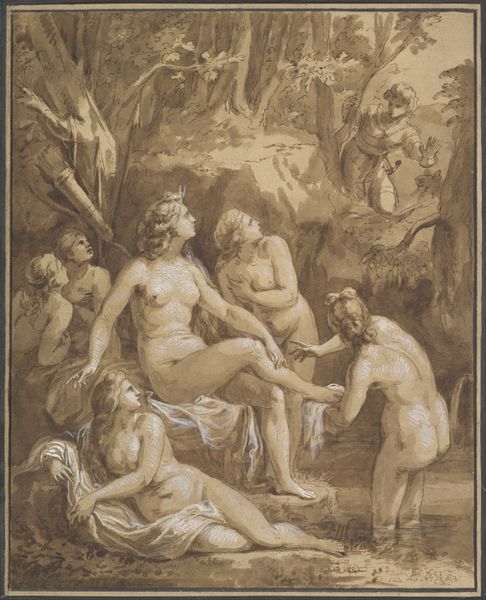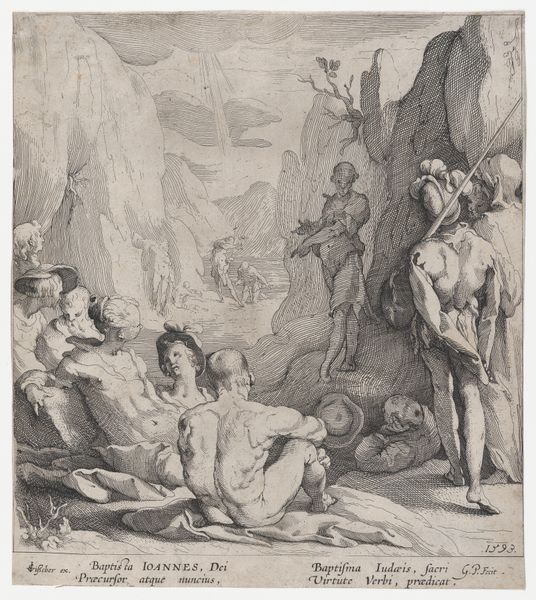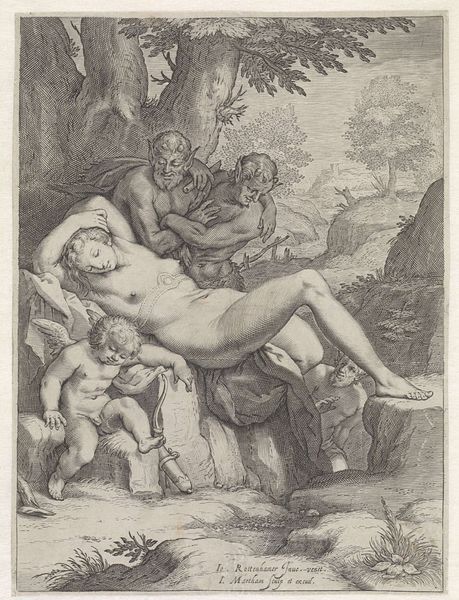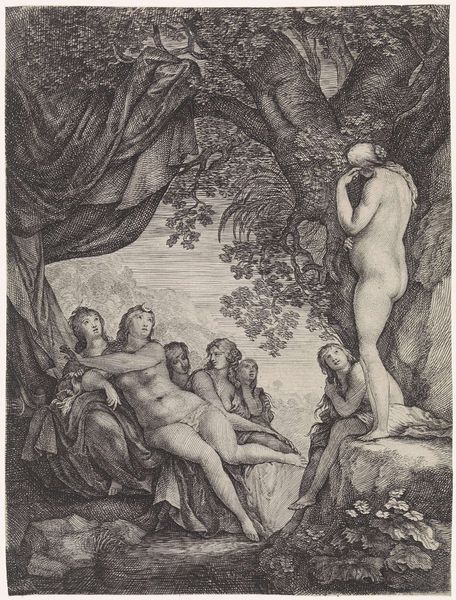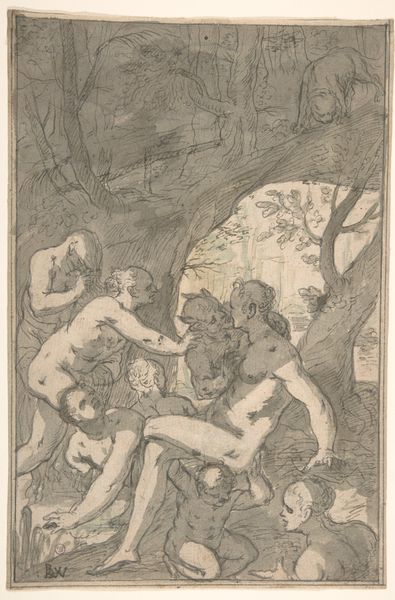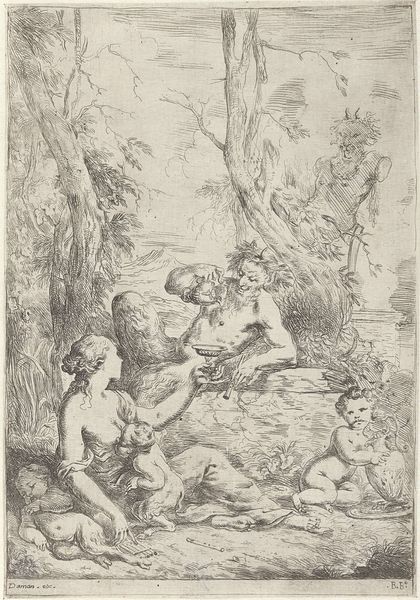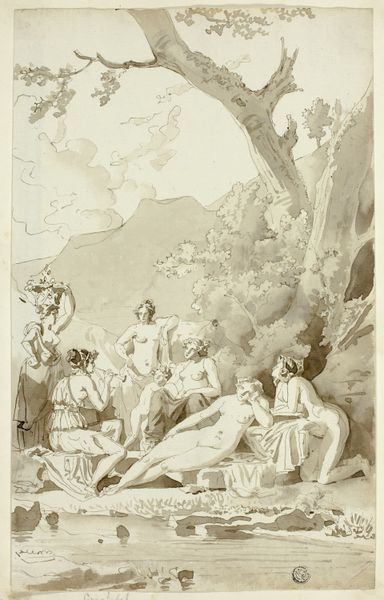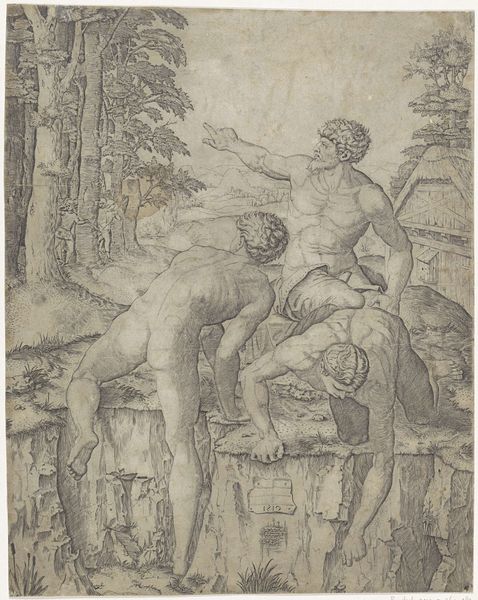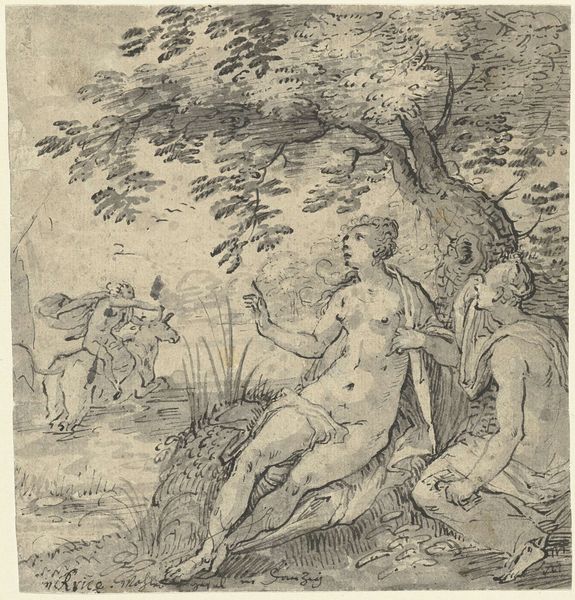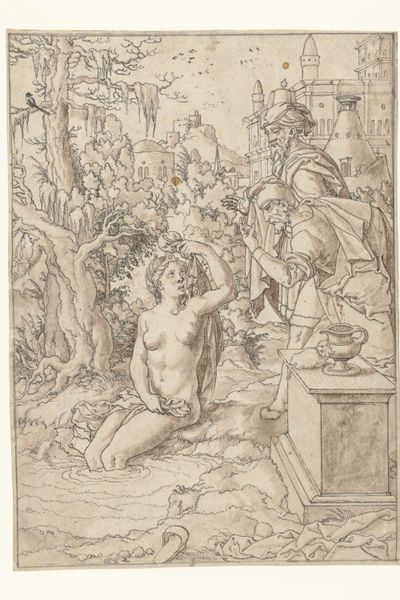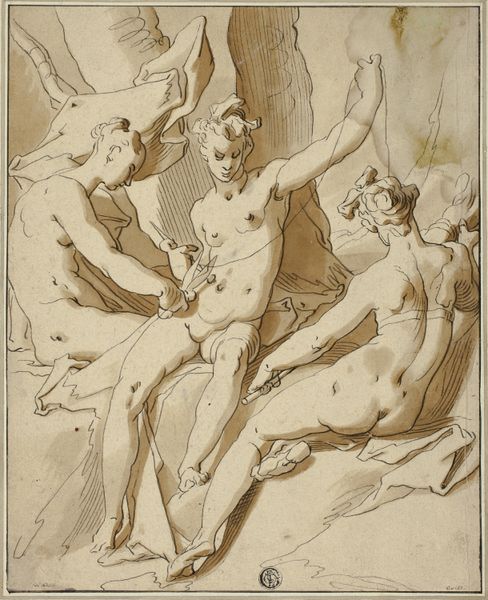
drawing, paper, pencil
#
drawing
#
allegory
#
baroque
#
landscape
#
figuration
#
paper
#
pencil
#
academic-art
#
nude
Dimensions: height 233 mm, width 197 mm
Copyright: Rijks Museum: Open Domain
Curator: Here we have "Toilet van Diana" attributed to Abraham van Diepenbeeck, created sometime between 1606 and 1675. The artwork is currently held at the Rijksmuseum. Editor: Immediately, I’m drawn to the landscape aspect – the raw quality of the pencil strokes and the material essence of paper—the cool tonal range is unexpectedly peaceful for such a traditionally voyeuristic theme. Curator: It depicts the goddess Diana and her nymphs in a secluded, natural setting. These bath scenes were fairly common motifs, blending classical mythology with an element of implied eroticism. These scenes existed to both titillate and moralize about purity and idealized beauty, of course under the cloak of the museum! Editor: Exactly. The choice of pencil on paper offers an immediacy. You feel Diepenbeeck directly interacting with his medium. I’m wondering about his labor, the countless strokes to get the play of light just so. Curator: That’s true. Diepenbeeck's style certainly showcases the prevalent baroque ideals of that era. Academic art favored allegorical scenes like these, reflecting the dominant artistic norms shaped by institutions like the art academies. Editor: Still, the handling of the pencil feels less academic than it might be. It has this rough and raw feeling. You can almost smell the pencil shavings. Curator: Absolutely, and the presentation underscores how such works functioned in their social environment – often as status symbols reflecting cultural literacy. Displayed prominently in the home of a patron or collector, scenes of classical mythologies reinforced their refined taste and social standing. Editor: Right. The nymphs themselves almost dissolve into their landscape setting. Considering paper itself - a common yet vital commodity. To render something delicate yet intimate. Diana, the moon goddess. Is being bathed. A sort of cleansing ritual taking place. What sort of social class could afford it and consume it? Curator: This piece shows us that art can be, at its core, more than just aesthetics—it serves as a mirror reflecting power structures within its society. Editor: Indeed, a great demonstration of what labour and skill can yield within a system.
Comments
No comments
Be the first to comment and join the conversation on the ultimate creative platform.

